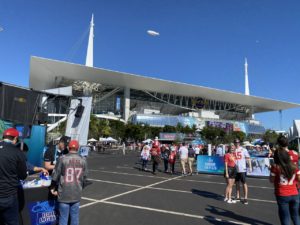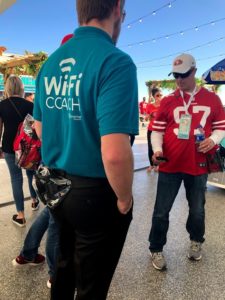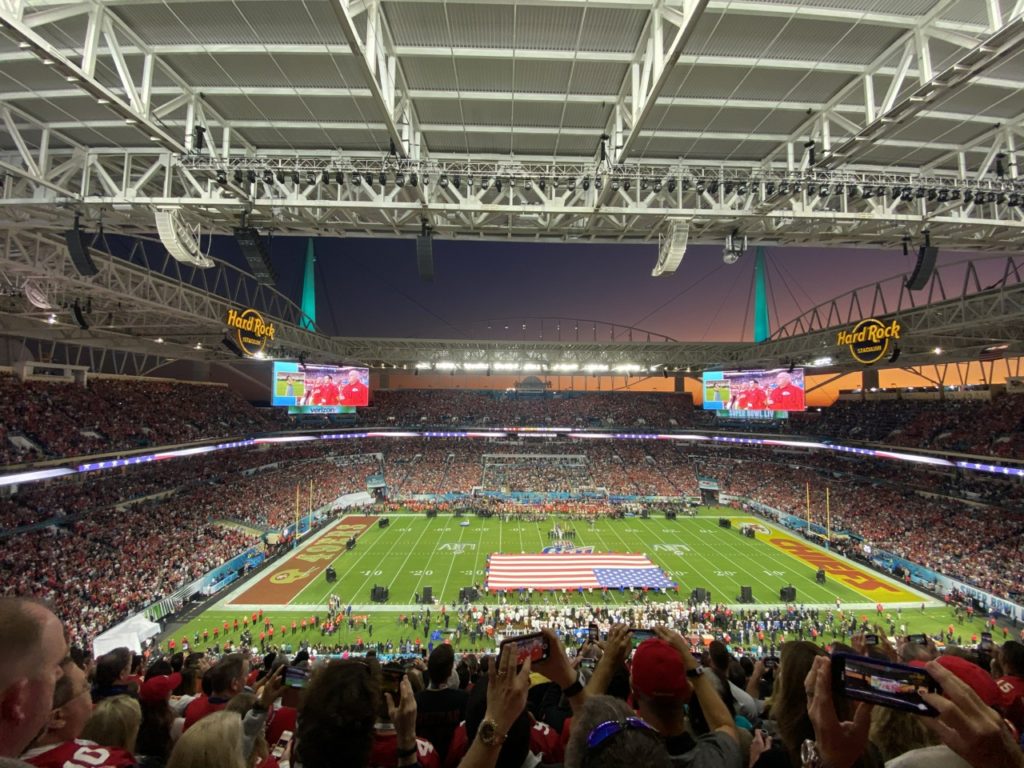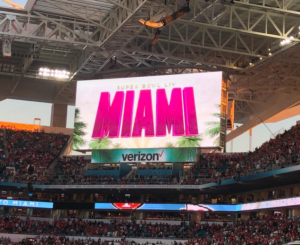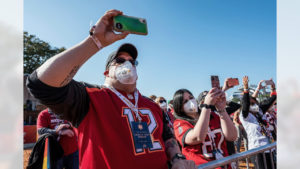
Fans at Super Bowl LV in Tampa used 13.97 TB of Wi-Fi data during the game. Credit: Preston Mack/Tampa Bay Buccaneers
Because of needs to socially distance, this year’s Super Bowl LV at Tampa’s Raymond James Stadium only saw 24,835 fans in attendance, much lower than the sellout crowds usually seen at the NFL’s championship game. According to numbers compiled by Extreme Networks, fans who connected to the stadium’s Wi-Fi network used a total of 13.97 terabytes of data, far below last year’s total of 26.42 TB used at Super Bowl LIV at Hard Rock Stadium in Miami, when 62,417 fans were at the game.
The fans watching Tampa Bay’s 31-9 victory over the Kansas City Chiefs live, however, used almost as much data per device as last year. According to Extreme 23,766 devices were seen on the stadium’s Wi-Fi network before and during the game. That works out to a per-user bandwidth usage rate of 587.8 MB per device, comparable to the 595.6 MB per user mark seen at last year’s big game.
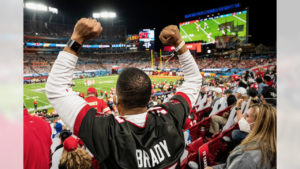
Only 24,835 fans were in attendance at Super Bowl LV due to safety restrictions. Credit: Preston Mack/Tampa Bay Buccaneers
Some more interesting nuggets from the Extreme numbers:
— Peak bandwidth usage was 7.9 Gbps, and peak concurrent users on the network was 12,288.
— The fans used 2.58 TB of Wi-Fi data before kickoff, and 11.39 TB afterwards.
— Top app used by fans was Facebook, accounting for 1.6 TB of all data used.
In part because of the pandemic safety measures, this was the first Super Bowl ever to go completely cashless for concessions and all-digital for ticketing. According to Extreme the company added some temporary Wi-Fi infrastructure to handle the increased needs for connectivity in areas like entry gates and other places outside the stadium.
